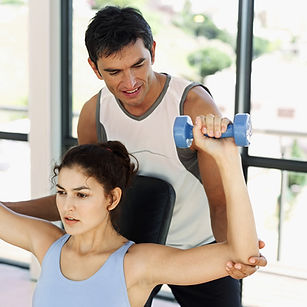Warrior Conditioning
Ask any fighter. The thing that often makes the difference in the cage is conditioning. Superior conditioning creates superior fighters. My methods are, to say the least, quite unconventional. Having such a vastly mixed background, I've experienced training methods of all sorts, including the Iron Skills of the Shaolin, and the Hojo Undo of Goju-Ryu.
Training is not only for the gym. It's those fighters who train daily on their own that have the real edge.

Train Like a Fighter
Whether you are in it for the glory of a championship title, fat loss, or just general health, the proper MMA conditioning program can help you to exceed expectations and achieve the results you never thought possible, all while having a fun and exciting experience.
As an MMA Conditioning Coach, my job is to design the best training plans for every client, with an emphasis on individualization. This requires specially designed assessments of an individual's health history and their physical attributes. Of course, this is not possible to achieve through giving tips on a website. For the purposes of this website, all information given will be for the most common needs that I have seen in my own gym. If you have any questions or concerns, please don't hesitate to send me a message. I'm always happy to be helpful.
Getting Started
Don't just go diving into an entirely new traiing system! Even fitness enthusiasts and MMA fighters with a lot of training under their belts have to start at the beginning to fix any issues that have come from past impropper training methods, while preparing their bodies for an entirely new approach.
Learn about the NESTA fitness pyramid, and the version designed specifically for MMA clients.


The Warm-Up
When you think of warming up I'm sure that images of people holding stretches for a few seconds enter your mind. Toss this concept out the door. Any decent trainner and fitness coach knows that the idea of stretching before a work out does more harm than good.
We call it a "warm up" because the goal is to raise the body's core temperature and stimulate blood flow. A warm up should be dynamic in nature, and all stretches should be performed in a constant, though controlled, manner, moving through the body's full range of motion (for instance, high knees). Static stretching is reserved for the end of the work out, because it relaxes and cools the body.
The Cool Down
The point of the overall cool down routine is to flush metabolic waste from the body by allowing the heart rate to move back toward the resting rate while still moving, using light exercises and finishing with stretching, which also helps in avoiding soreness and increasing flexibility.
If ever you've experienced dizziness after a work out, it is usually caused by abruptly stopping, allowing blood to pool in the extremities. This is never a good thing. Think of it like cars on a freeway. If the car in front suddenly haults, the rest have trouble reacting fast enough, and then we have several cars piled up. This is basically what happens with a sudden drop in heart rate.

The Work Outs
Each of the phases will direct you, in several spots, to pages that will present you with a variety of work out styles and systems. Or, you can just go here to look at them all in one area. If all you want is to look through some MMA work outs, this is the area for you. If, however, what you are seeking is a complete MMA training program, then definitely continue on to phase one and stick to the program. Either way, I'm giving this page for easier reference, whether you use the program or not.


Level 1: Foundation Fitness
This is phase one of the conditioning program. We first need to focus on motor learning, teaching the body to have a more structurally sound movement pattern, which in turns allows for much greater power in every movement.
Having a coach to assist you is the best way, but if you must train on your own, use a mirror, or even a camcorder. The reason for all this is to ensure that everything is propperly alligned. This is also where we strengthen the connective tissue, allowing for a more effective - and less damaging - future training program.
Level 2: Basic Strength & Hypertrophy
Once you've conditioned your body to be ready for heavier work outs, it's time to move up to those heavier work outs.
"Basic strength" is all about lifting heavy. "Hypertrophy" refers to muscular growth, which happens when you reduce the weight a little after three weeks of increase. Between the two, prepare to become a muscular powerhouse.

Level 3: Skill-Related Fitness
Once enough time has been spent building a foundation of structural integrity and physical adaptation, we can begin some more hard core training.
This level will follow a repetition of four sub-levels, which will increase in intensity with every continued cycle. Now we can work on skill related circuit training every fourth week. This is the phase that slightly differs from the regular NESTA fitness program.

Level 4: Peak Training
This is where the training gets really crazy. Each training day will focus on a specific area of fitness - skill training, basic strength, muscle building, and strength endurance - with an emphasis on high intensity.
If training for an upcoming fight, this is also the phase where you will begin to taper it down before the event. In fact, once you've made it through this phase, both phases 3 and 4 shall continue in a loop to help continued growth in your conditioning.




